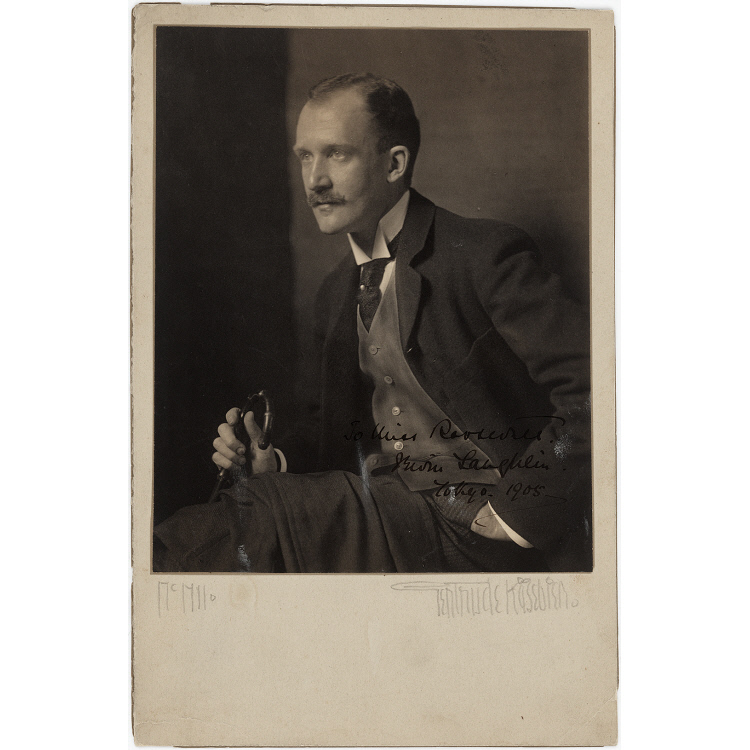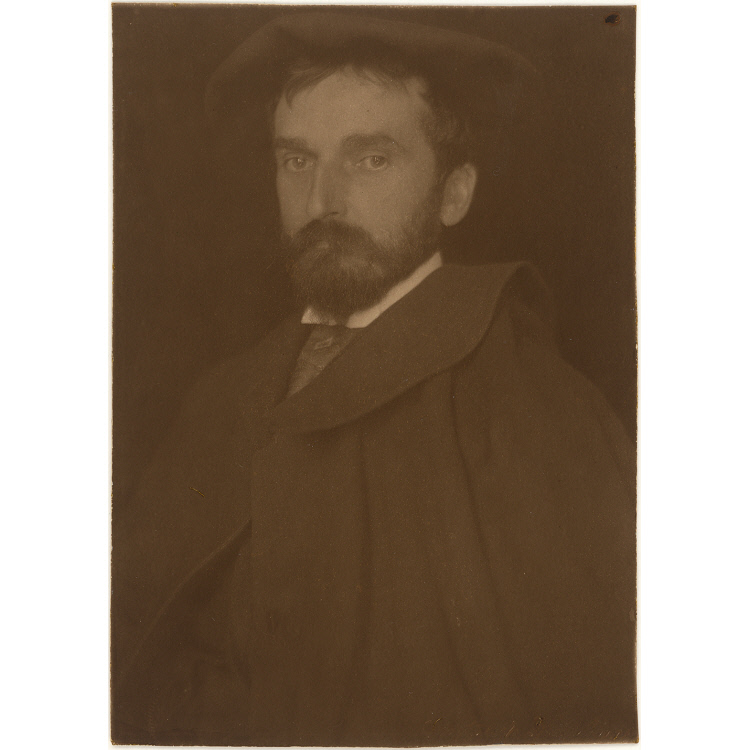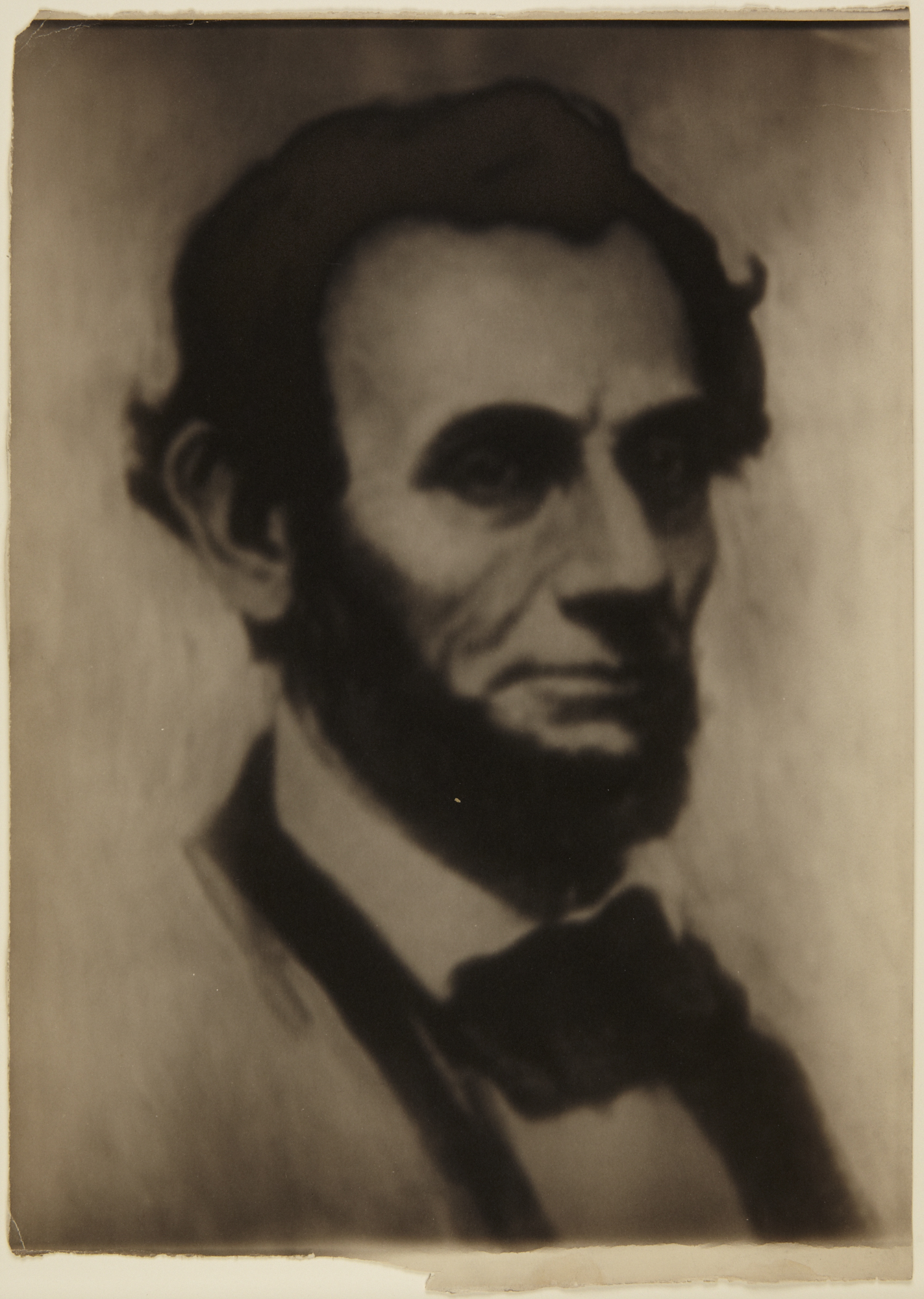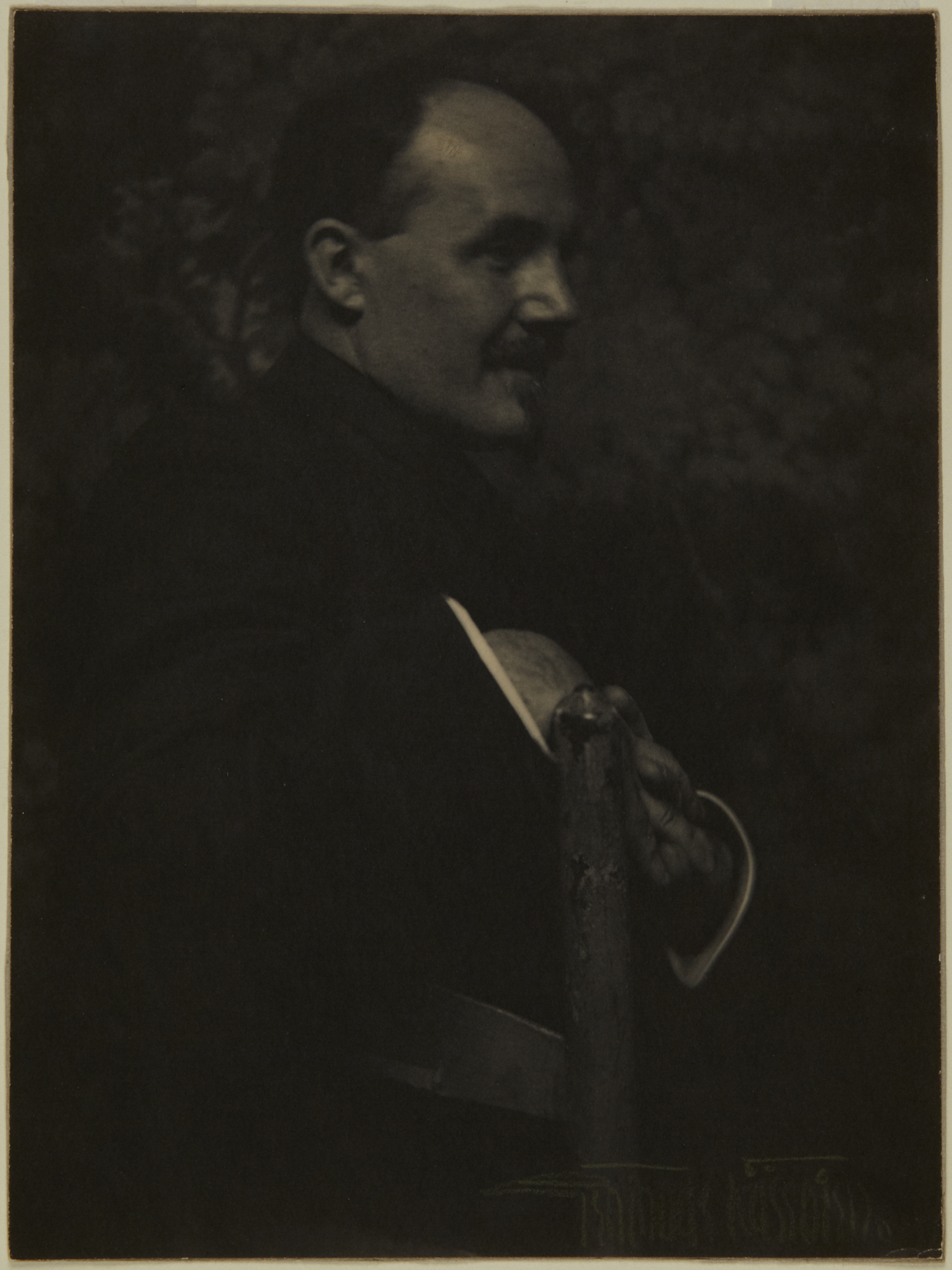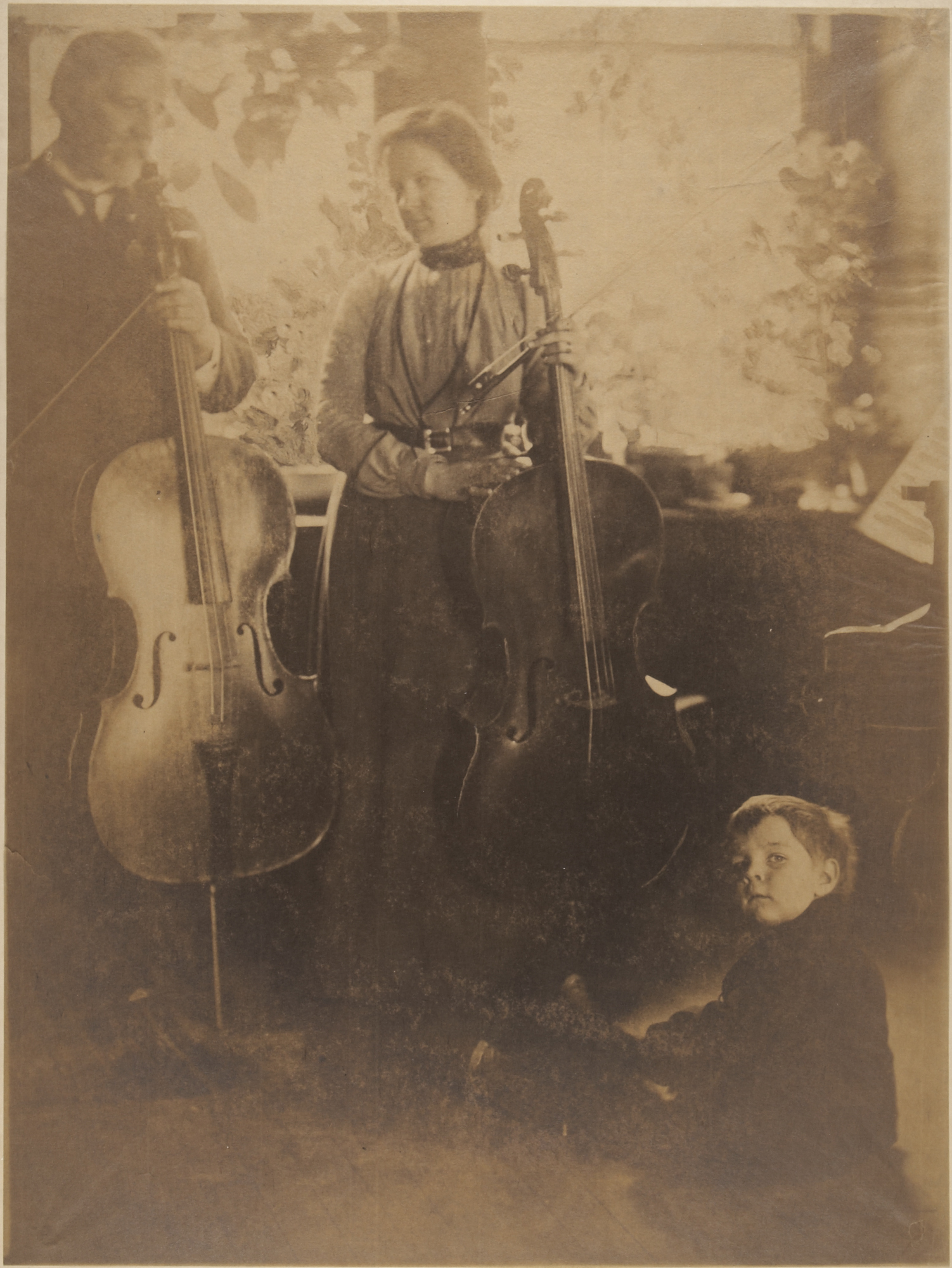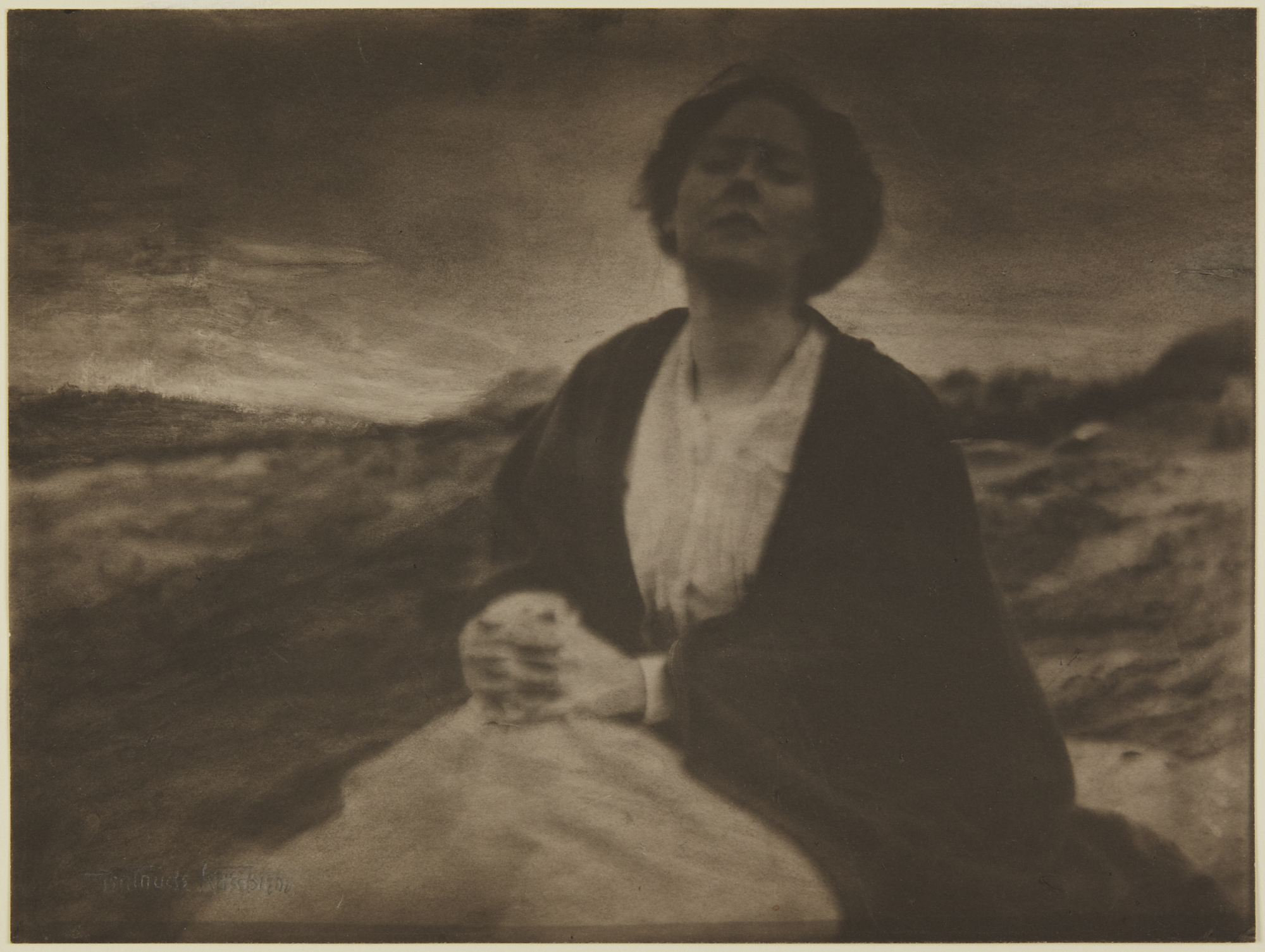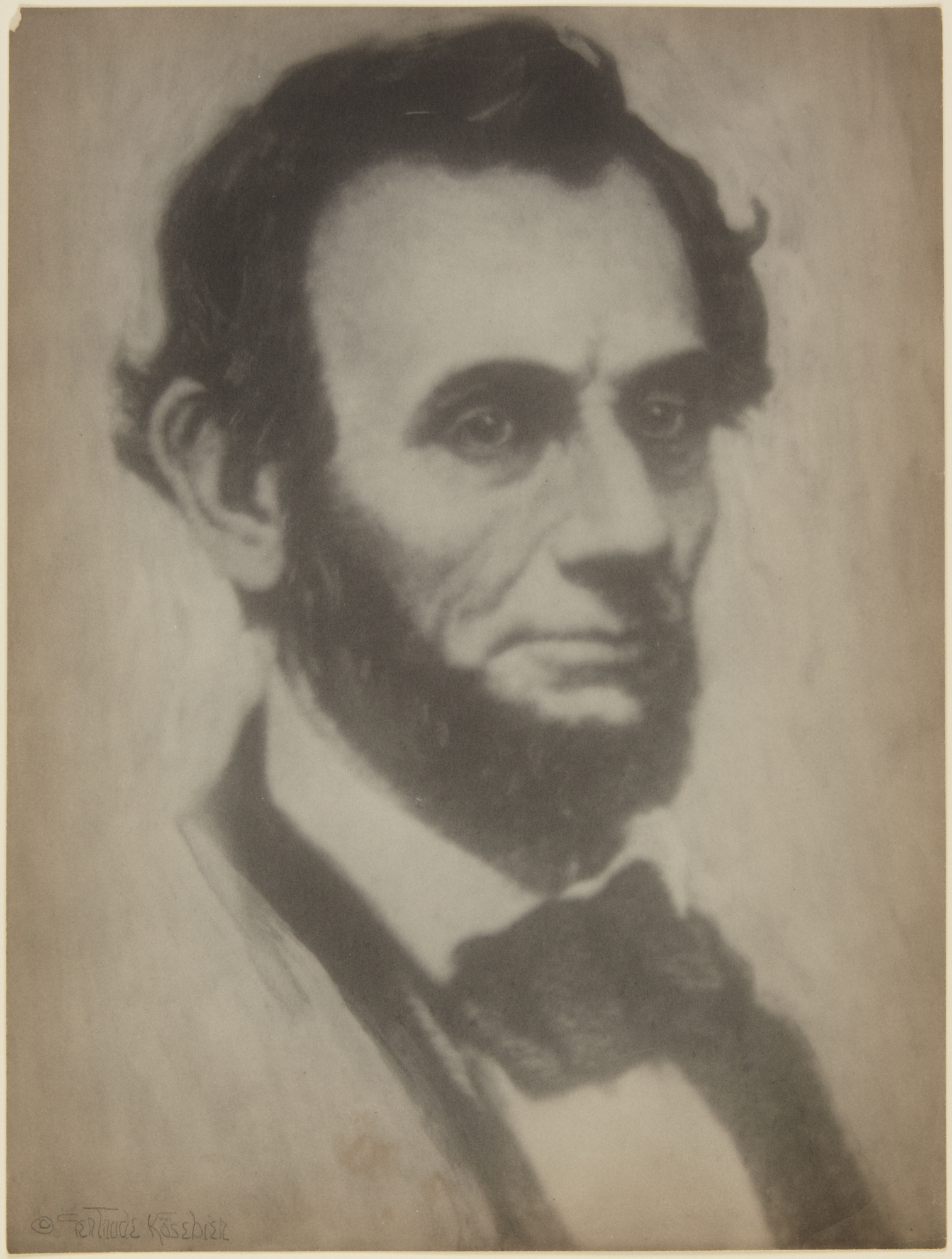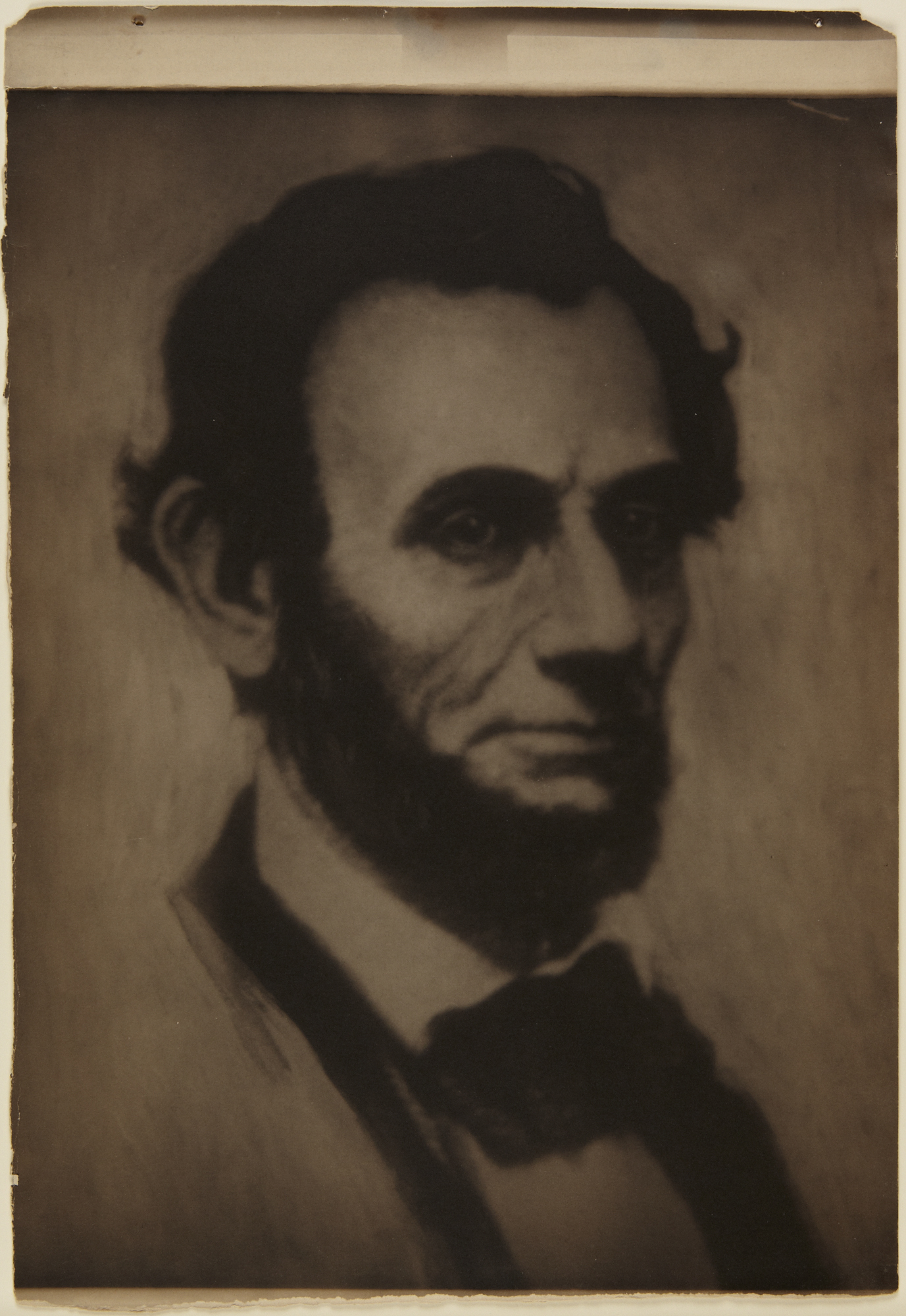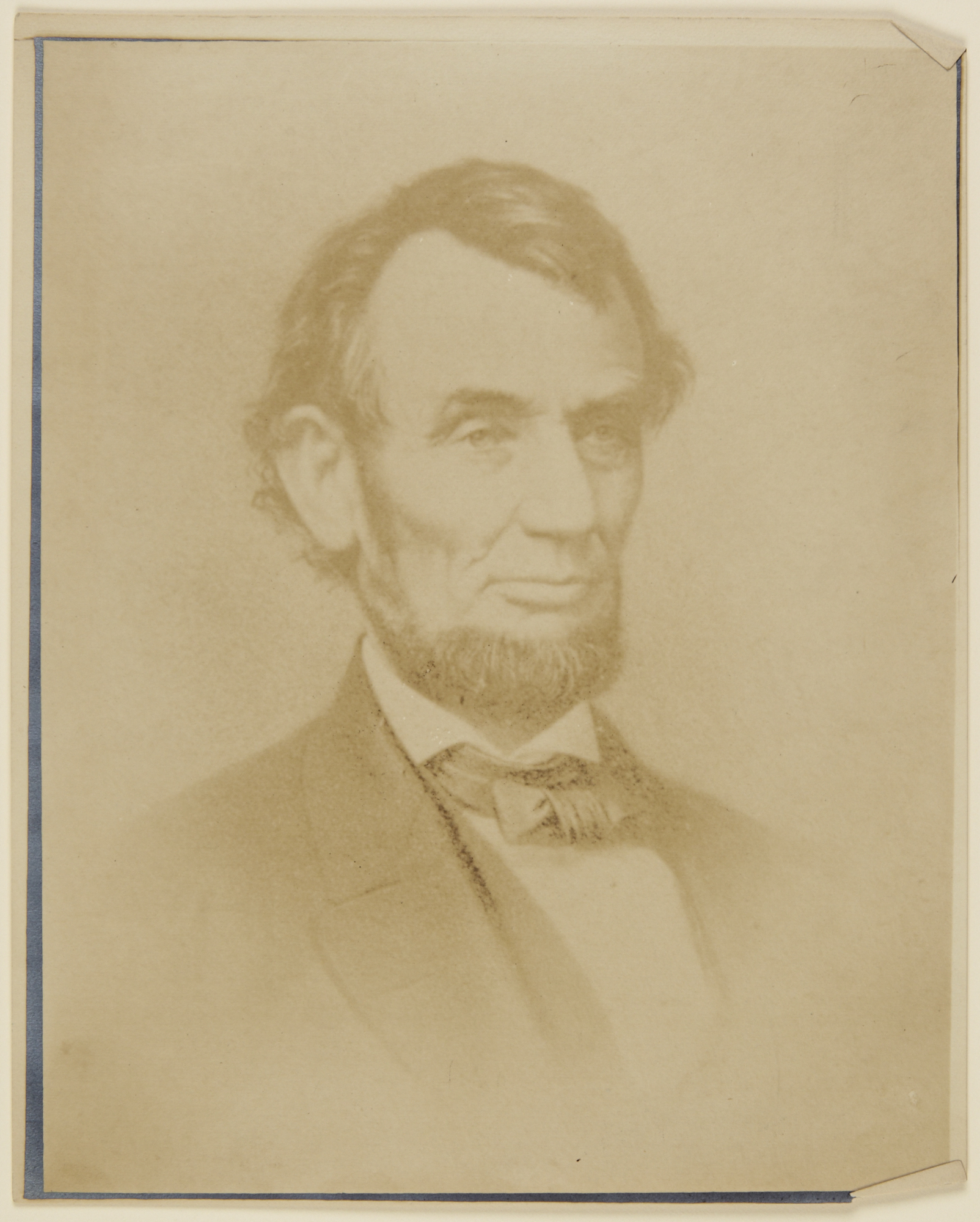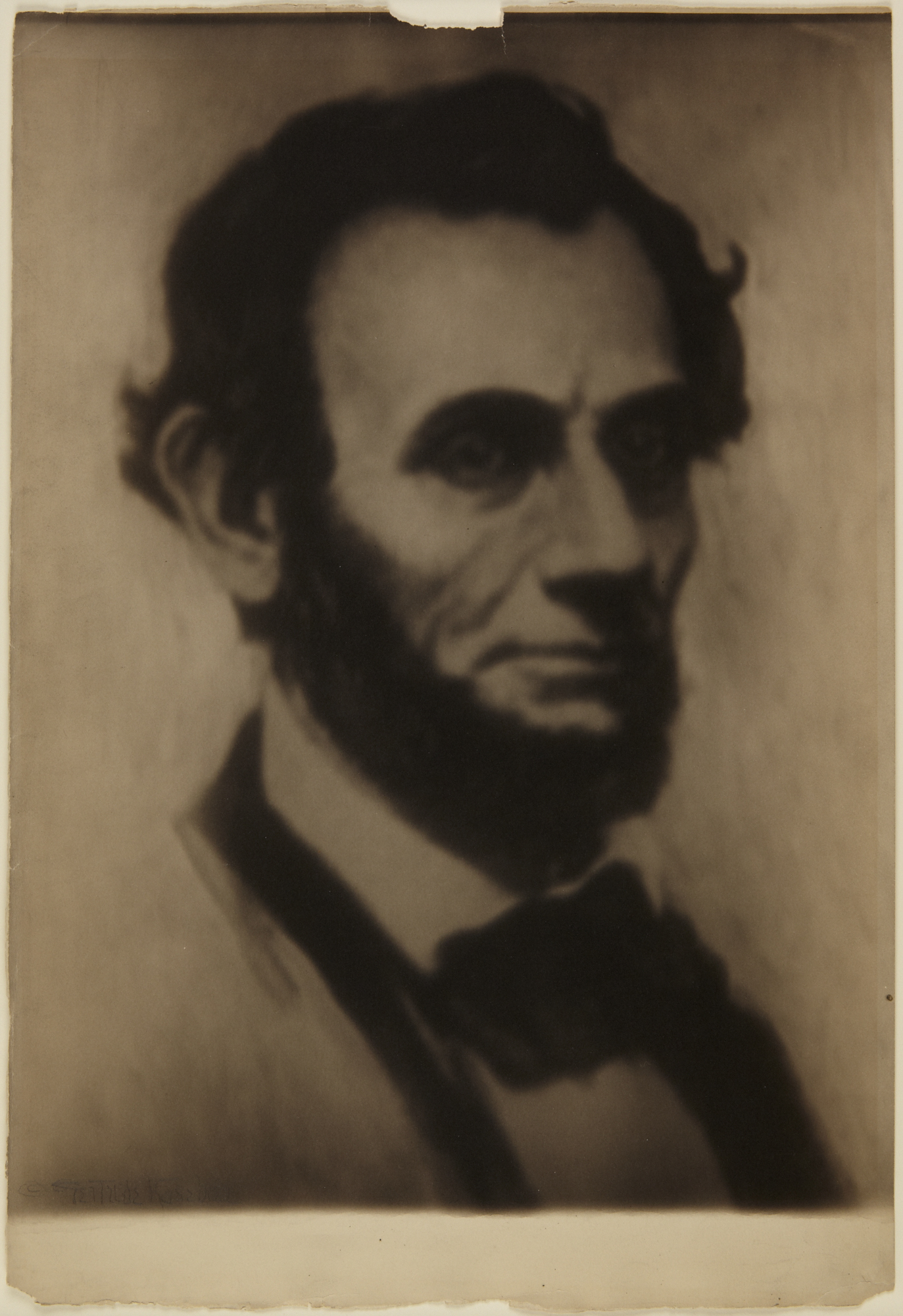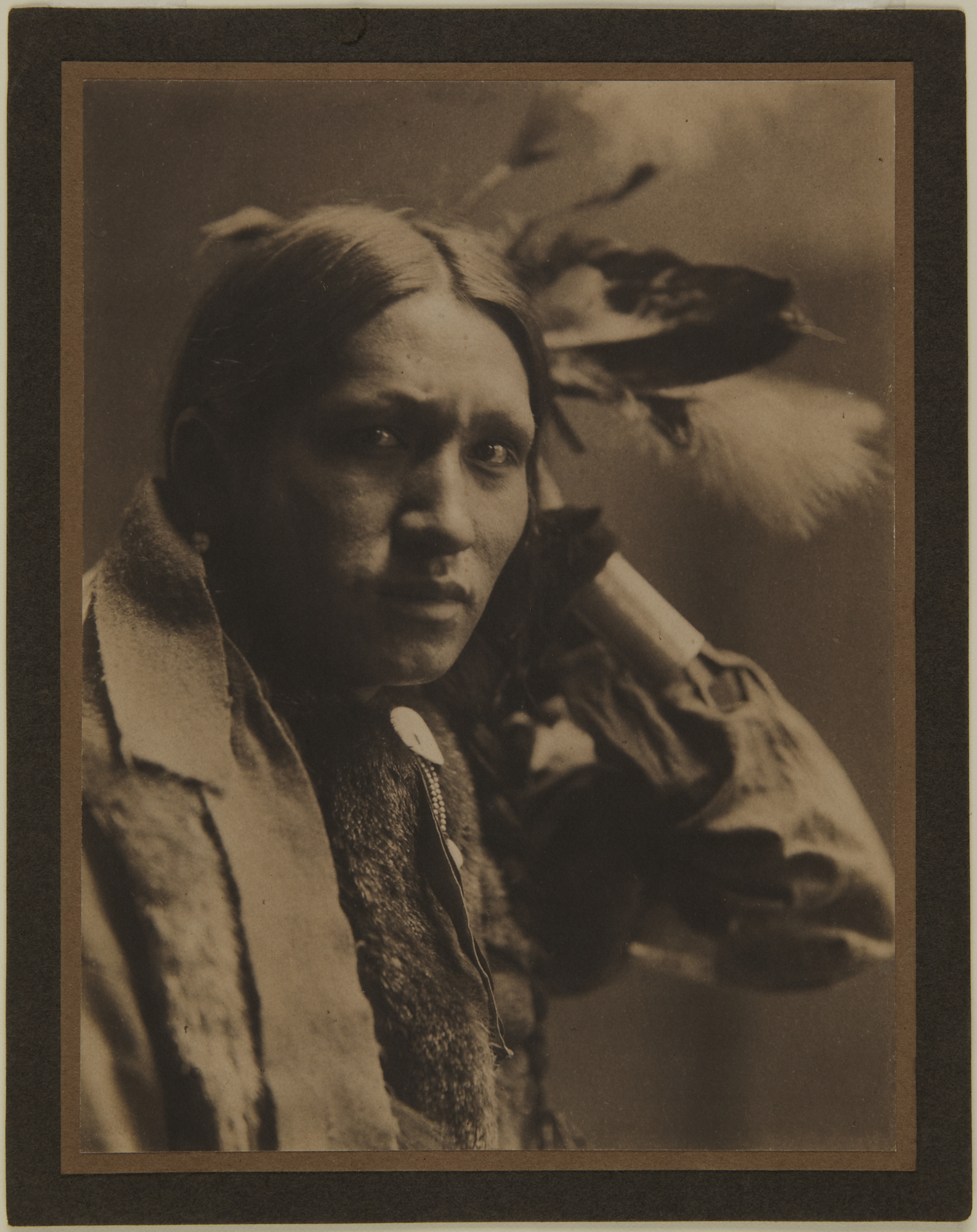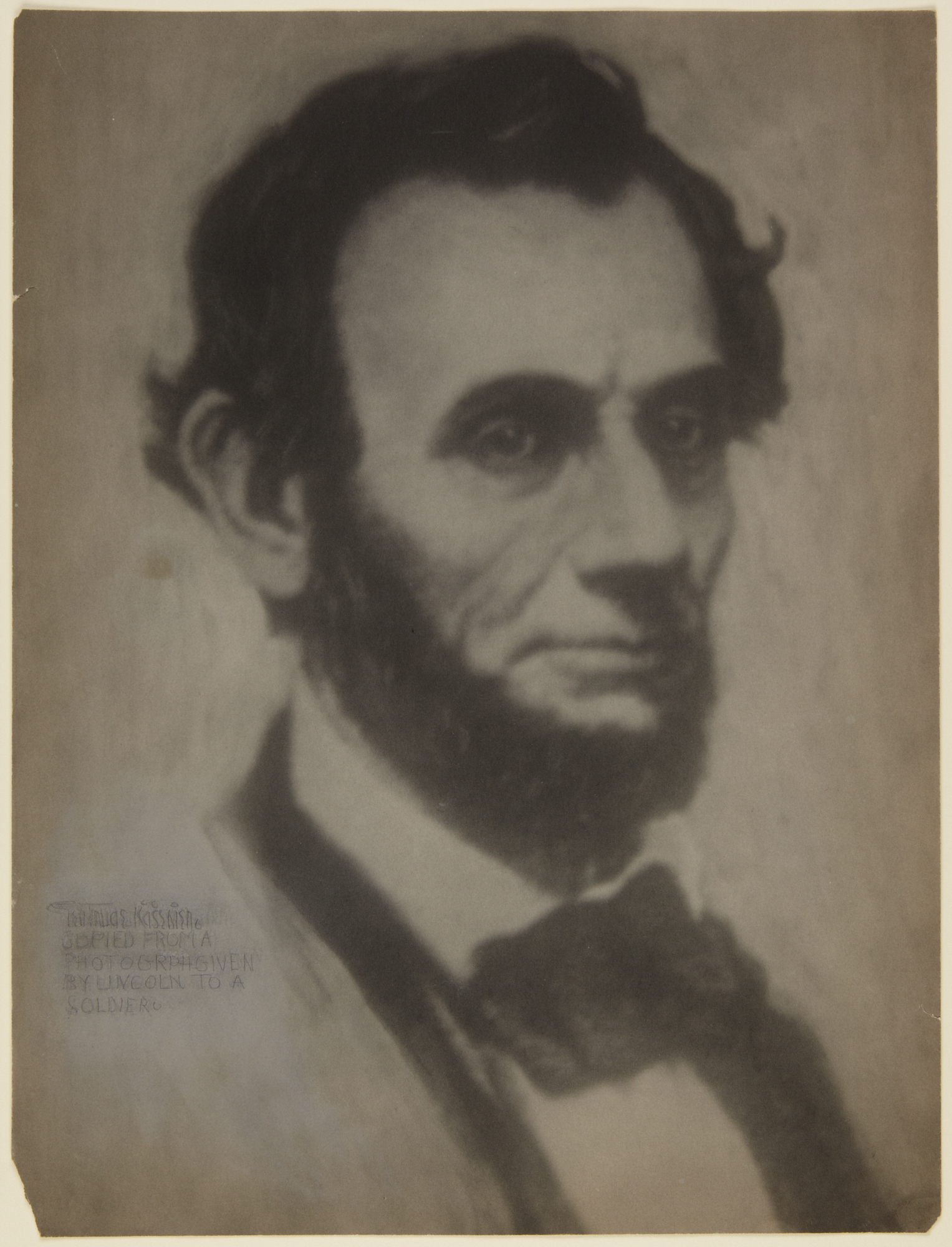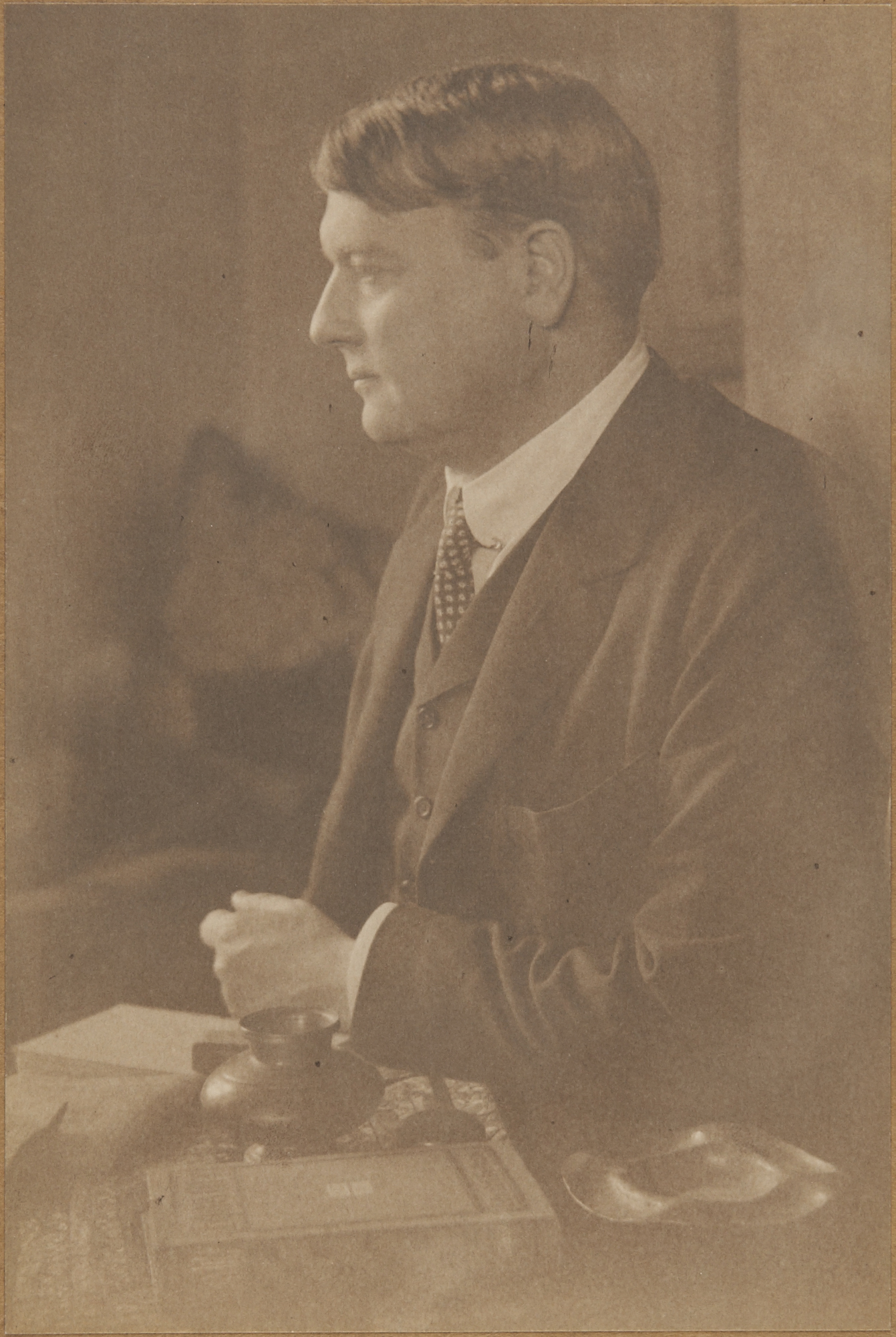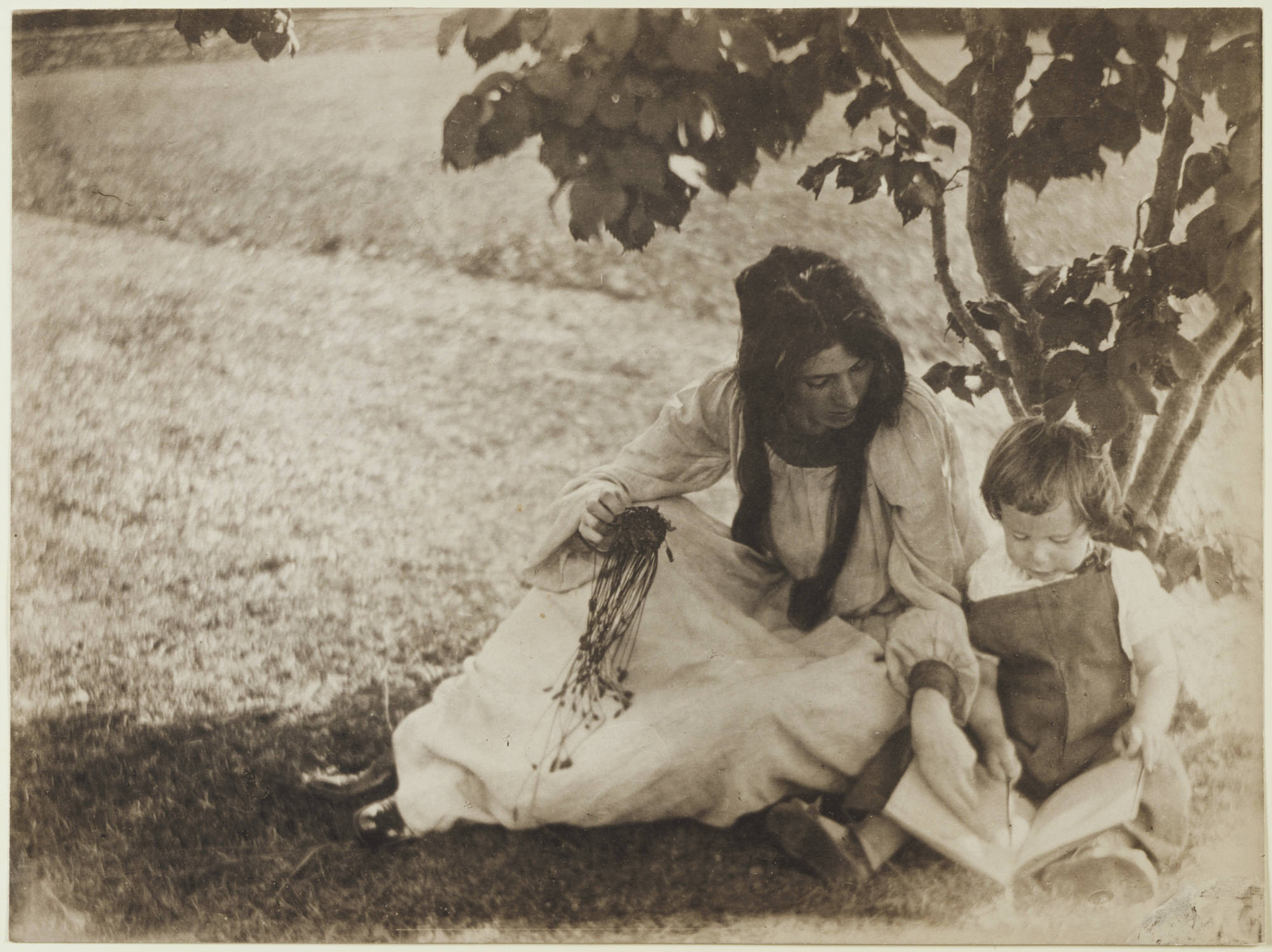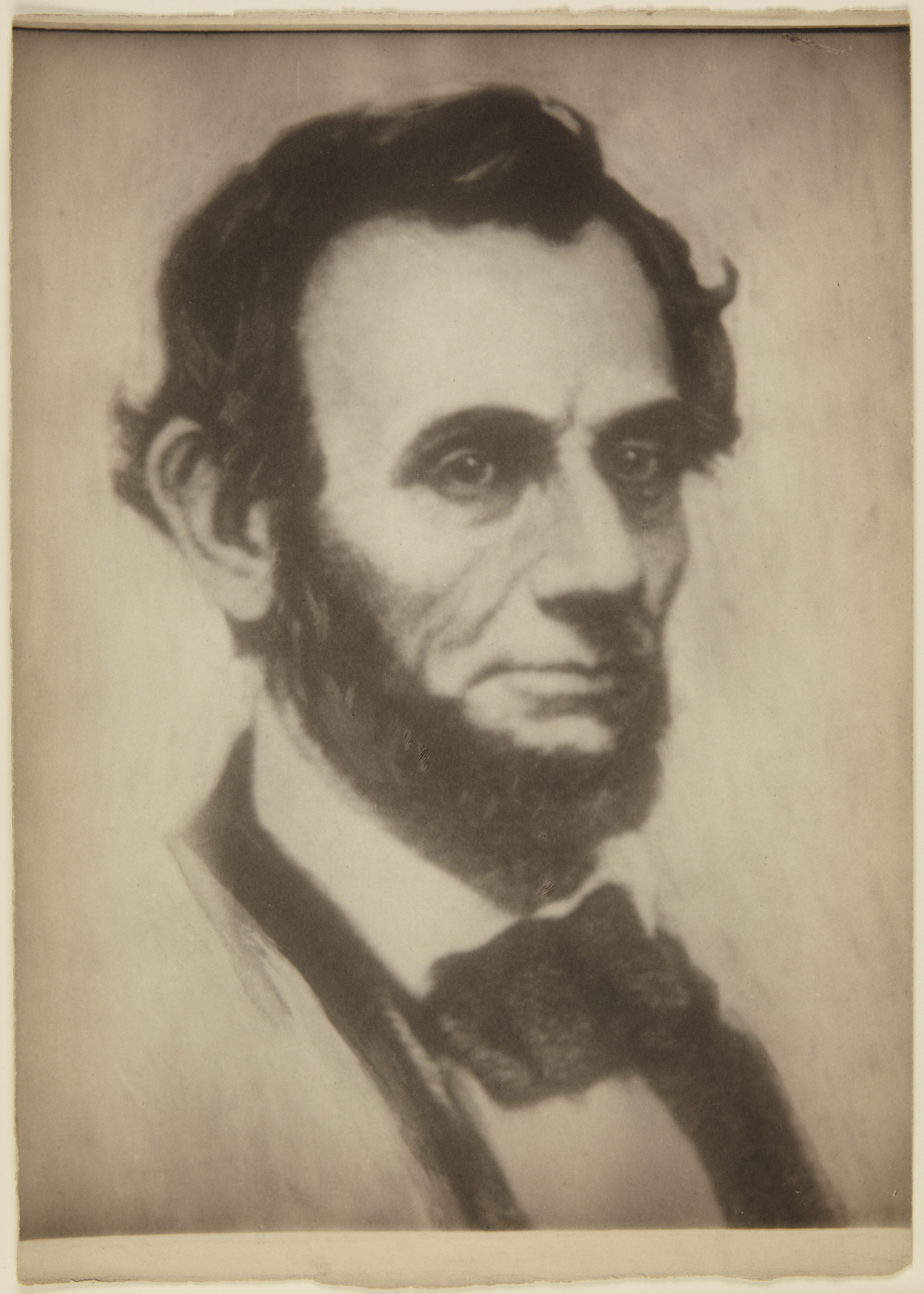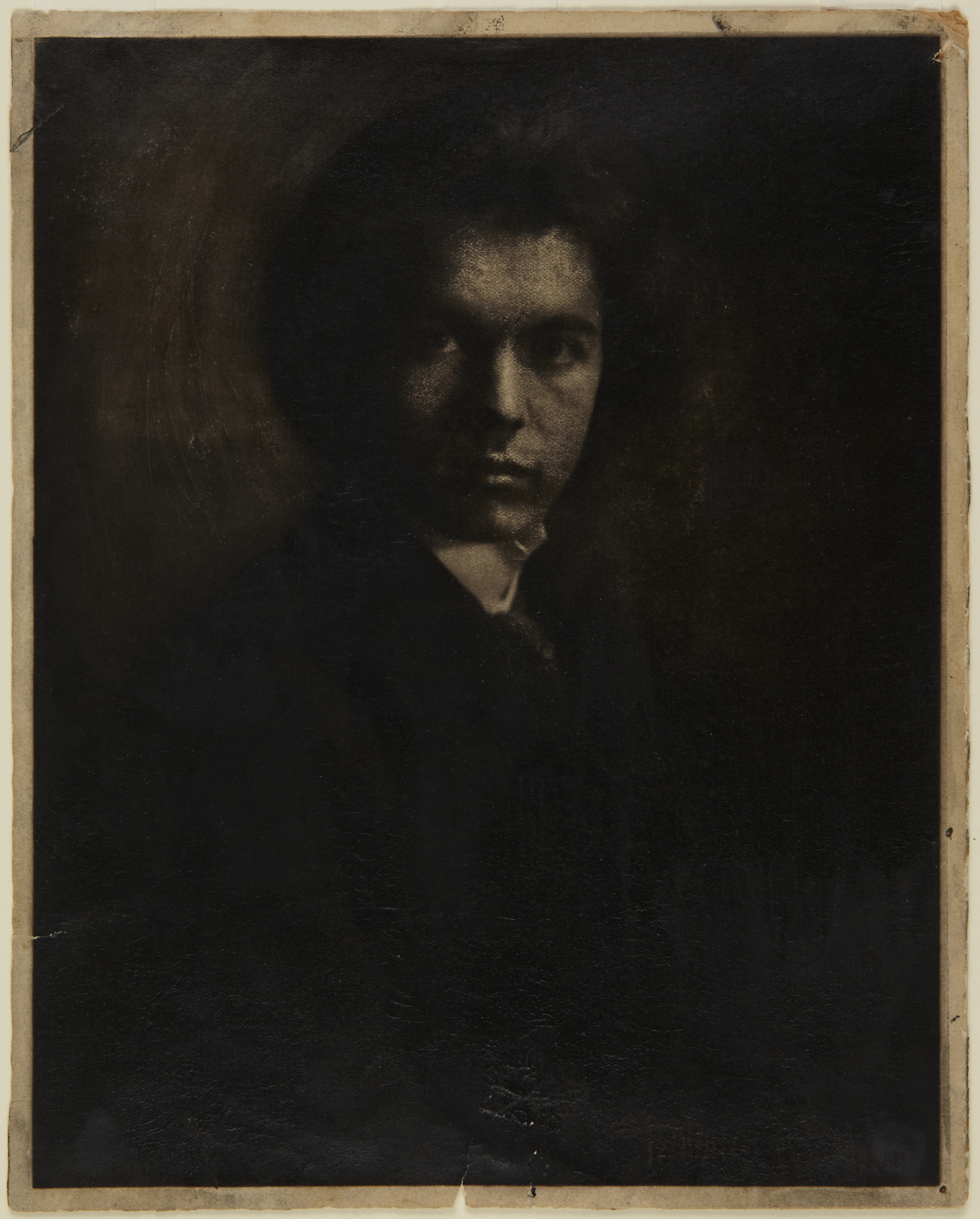Gertrude Käsebier
Gertrude Käsebier began her artistic studies at the age of thirty-seven after her children had grown up. While studying painting at Pratt Institute in New York, she began to explore photography. In 1897 she opened a photography studio in New York, specializing in portraits of women and children. Käsebier was a founding member of both the Photo-Secession group and the Pictorial Photographers of America. A favorite of Alfred Stieglitz, she was the featured artist in the premier issue of Camera Work. The Manger [SAAM, 1994.90.3] was one of the principal illustrations. Describing The Manger, art critic Charles Caffin wrote that Käsebier's use of light in the simple setting "fills the place with heaven and surrounds the figures with divinity." However, Käsebier did not explicitly support a religious interpretaion of this image. She encouraged friends and critics to regard it as an artistic exercise in the effects of light in a composition of white on white. As in much of her other work, form and pattern are emphasized here. Writing in 1899, critic Arthur Wesley Dow stated that Käsebier combined two functions in a photograph—one as a "record of truth, the other as a work of fine art."
Merry A. Foresta American Photographs: The First Century (Washington, D.C.: National Museum of American Art with the Smithsonian Institution Press, 1996





